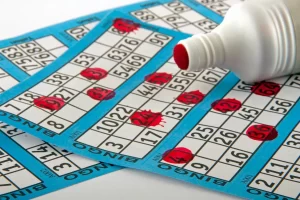Let’s be honest. The word “bingo” probably conjures up images of community halls and numbered balls. But what if I told you that this classic game is secretly one of the most versatile teaching tools you can have in your classroom? Seriously. The basic framework—a grid, markers, and a caller—is a blank canvas waiting for your educational masterpiece.
The beauty of educational bingo is its sheer adaptability. It transforms rote memorization into an active, social, and genuinely fun challenge. Students aren’t just learning; they’re hunting, competing, and celebrating. And the best part? You can tailor it to any subject, any grade level, and any learning objective. Let’s dive into how you can make bingo work for you.
Shaking Up the Classic Format: Core Variations
First things first, you’ve got to move beyond the standard 5×5 grid. That model is fine, but the real magic happens when you break the mold. Here are some foundational variations to get you started.
1. Grid Geometry: Changing the Board
Not every topic needs 25 squares. A 3×3 or 4×4 grid is perfect for younger learners or for quick, focused review sessions. For more complex subjects, you could even try a 5×7 grid. The shape itself can be part of the game—think a T-chart for pros/cons or a timeline for historical events.
2. The “Free Space” Reinvention
That center square doesn’t have to be “free.” Rebrand it as the “Challenge Square” or the “Wild Card.” When a student marks it, they have to answer a bonus question from you, define a key term, or even explain a concept to their neighbor. It turns a moment of luck into a moment of learning.
3. Winning Beyond the Line
Forget just straight lines. Shake up the winning patterns to keep engagement high. Here are a few ideas:
- Four Corners: Simple and fast, great for a quick warm-up.
- Letter X: A diagonal cross from corner to corner.
- Picture Frame: Marking every square on the outer edge of the card.
- Blackout: Covering the entire card. This is fantastic for end-of-unit reviews where you want to cover every single term or concept.
Subject-Specific Rule Adaptations
Okay, so you’ve got the structural ideas. Now, let’s get into the nitty-gritty of content. How do you actually make bingo about, say, grammar or biology? Well, here’s the deal.
Vocabulary & Language Arts Bingo
This is a classic for a reason. Instead of numbers, the squares contain vocabulary words. But let’s adapt it further. The caller doesn’t just say the word. They read out the definition, a synonym, or use it in a sentence. Students have to listen, process the meaning, and then find the correct word on their card. This pushes them beyond simple word recognition.
Math Bingo
Math bingo is a powerhouse. The squares hold answers to problems. The caller states the equation. For example, if a square has “12,” the caller might say “6 x 2” or “24 ÷ 2.” You can do this with fractions, decimals, basic arithmetic, or even simple algebraic expressions. It builds computational fluency without the dread of a worksheet.
Science & Social Studies Bingo
For these content-heavy subjects, bingo becomes a review gamechanger. Fill the squares with key concepts, historical figures, or parts of a cell. The caller provides a clue. “I was the 16th president of the United States,” or “This is the powerhouse of the cell.” You can even use images on the cards—a picture of a volcano or a map symbol.
Listening & Phonics Bingo (For Early Learners)
This one is all about auditory processing. For phonics, the cards have letters or letter blends. The caller says a sound, like “/k/,” and students mark the letter(s) that make that sound (C or K). For listening skills, the caller might say, “Mark the picture of the object that rhymes with ‘cat’.”
Logistics and Classroom Management
Making the game is one thing; running it smoothly is another. A little planning here makes all the difference.
| Material | Low-Tech / No-Tech Alternative |
| Pre-printed Bingo Cards | Blank grids students fill out themselves from a word bank. |
| Bingo Daubers / Markers | Pennies, beans, small pieces of paper, or just a pencil to X out squares. |
| Caller’s Deck | Slips of paper drawn from a hat or bowl. |
| Digital Version | Use a tool like Flippity.net or a simple PowerPoint slide for the whole class to see. |
Honestly, the DIY approach can be better. When students create their own cards from a master list, they’re already engaging with the material, thinking about the spelling and placement of each term. It’s a learning activity in itself.
Why This Works: The Learning Science Behind the Fun
You might wonder if this is just sugar-coating. It’s not. There’s solid pedagogy here. Bingo is a form of low-stakes formative assessment. You get a real-time snapshot of who understands what, all without the pressure of a quiz. The game format also provides immediate feedback—if a student isn’t finding the answer, they know they might be unsure about that concept.
Furthermore, it leverages retrieval practice. Students are constantly forced to recall information from their memory, which is one of the most effective ways to strengthen neural pathways and move knowledge from short-term to long-term storage. The social and playful context lowers what linguists call the “affective filter”—that mental barrier of anxiety that can block learning.
A Final Thought: The Game is What You Make It
So, the next time you’re facing a room full of glazed-over eyes or dreading another round of vocabulary drills, remember the humble bingo card. It’s more than a game; it’s a framework for engagement. It’s a way to hear the quiet thrill of a student whispering “Bingo!” not because they got lucky, but because they truly knew the answer. And in that moment, learning doesn’t feel like work at all. It feels like winning.












